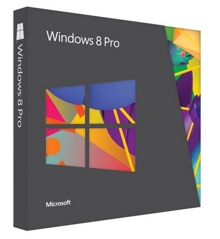Microsoft: The Windows 8 learning curve is 'real and needs to be addressed'


While Windows 8 was Microsoft's idea of what the Windows platform should evolve into, the next version could be tailored to what users actually want from a modern operating system.
According to the Redmond-based software giant, more than 100 million Windows 8 licenses have been sold, a figure which puts sales of the new operating system for the first six months on par with that of Windows 7. This sounds good, but since this figure includes license sales to OEMs and figures which show that PC sales have fallen through the floor lately, it is unclear how many of these Windows 8 licenses are in the hands of users and how many are sitting on shelves waiting to be loaded onto PCs.
Could the problem with Windows 8 be that the operating system represents too steep a learning curve for users? Microsoft seems to think that it might be the case, and is getting ready to do something about it.
Tami Reller, chief marketing officer and chief financial officer of the Windows division, has been speaking about Windows Blue, the upcoming version of Windows that is scheduled to be released later this year, and has hinted that this version will be easier for people to figure out, especially for those running the operating system on PCs that don't feature touchscreens.
Speaking to the New York Times, Reller said that the Windows 8 "learning curve is real" and that it "needs to be addressed", suggesting that the operating system isn't as easy to use as it could be.
While Microsoft is tight-lipped about how Windows Blue will differ from Windows 8 — we'll have to wait until June for a public preview — Reller did offer some hints as to what might be in the pipeline.
"We started talking about the desktop as an app," said Reller. "But in reality, for PC buyers, the desktop is important."
It also seems that the Windows 8 tutorial — which is nothing short of a joke — is going to be revamped, with Reller quoted as saying that "we need to help them [users] learn faster".
Usability experts were quick to criticize Windows 8, in particular the new user interface changes. Jakob Nielsen, who holds a PhD in human-computer interaction, called the operating system "disappointing" for "both novice and power users", and "a monster that terrorizes poor office workers and strangles their productivity". Raluca Budiu, a user experience specialist with the Nielsen Norman Group, called the new Windows 8 user interface "confusing" and said that it imposed "a cognitive burden" on the users.
It's clear that something needed to be done.
Back in June of 2012, I called Windows 8 a "design disaster", and my opinion hasn't changed since. As much as I like the speed and performance gains that the new operating system brings, and despite it being as rock-solid, snappy, and responsive as Windows 7, when it comes to using it to do real-world work on non-touch systems, Microsoft's latest offering continues to feels utterly unusable. There's too much mystery meat navigation, and the last thing I want is for my PC to force me into playing "hunt the app" every time I want to get something done.
After months of trying to adapt to the platform, I still feel that I need to use a third-party utility, such as Start8, to make Windows 8 look like Windows 7. Why bother, when Windows 7 makes a much better Windows 7, without the need to pay for, install, and manage third-party hacks.
I'm hopeful that Microsoft is talking about making Windows 8 better. Windows is vital to a flourishing PC ecosystem, and that ecosystem currently needs all the help it can get.